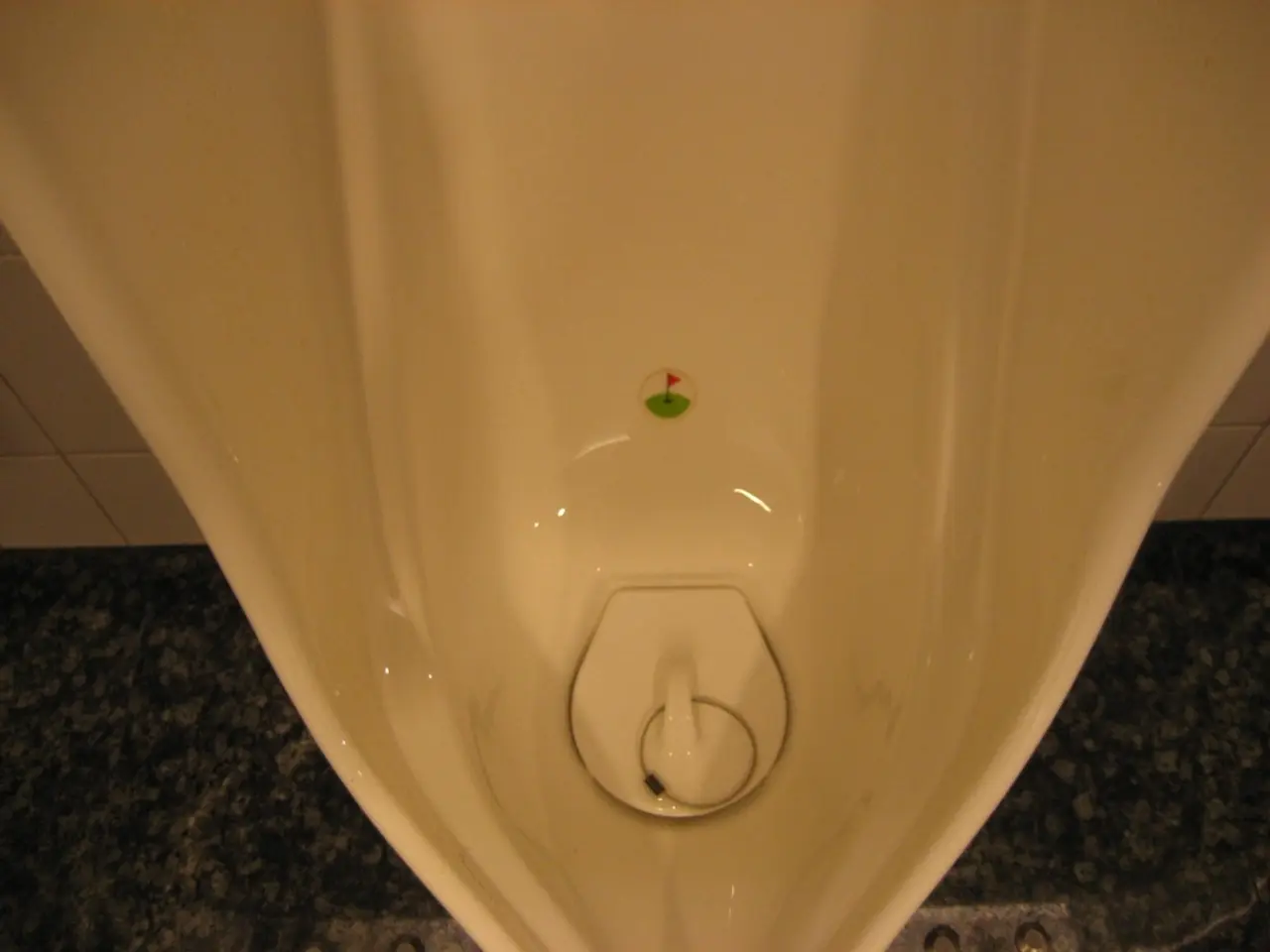Understanding the essentials of bladder irrigations performed over a prolonged period
In a hospital setting, the Continuous Bladder Irrigation (CBI) procedure is commonly performed after prostatectomy and bladder surgery. This process involves flushing the bladder with sterile fluid, usually saline, for the purpose of preventing blood clots and encouraging free flow of urine.
Before the CBI procedure, a person must have a bladder catheter, a thin tube inserted into the urethra. During the procedure, a nurse or urologist will hang two bags of sterile saline water, connect the catheter to the bags, and adjust the drip rate. Clear outgoing fluid during CBI indicates that the bladder is clean.
Recovery after CBI focuses on infection prevention, monitoring urine output and bleeding, bladder function assessment, and timely clinical intervention if complications arise. Maintaining sterile technique and close observation are critical to reducing risks of Urinary Tract Infections (UTIs) and other sequelae.
CBI is not usually painful but can be uncomfortable. Discomfort may occur during CBI due to restrictions in movement from carrying the saline bags and the need to avoid disconnecting the catheter. Some people may require manual aspiration with a large syringe and intermittent CBI if they have large blood clots in the bladder that the body cannot push out on its own.
Potential complications include UTIs, which are the most common, especially due to prolonged catheter use, because the closed drainage system can be breached or contaminated. Bleeding or re-bleeding may occur, especially if CBI was used after surgery involving the bladder or prostate, due to continued irrigation and potential irritation of mucosa or surgical sites. Bladder injury or exacerbation of existing injury can also occur if not carefully managed. Catheter blockage or no urine drainage can cause bladder distension; requiring immediate troubleshooting or medical attention.
Additional complications triggering emergency care include fever with chills, severe pain, bright red blood in urine, inability to drain urine, and signs of systemic infection. In such cases, it is crucial for individuals undergoing bladder irrigation to seek medical attention immediately.
After the bladder is clean, the catheter is disconnected from the patient. There is no specified recovery period after CBI, but recovery from any associated surgeries may still be necessary. People undergoing bladder irrigation should be vigilant and report any symptoms such as blood, pain, or the inability to urinate to their healthcare professional.
Referral to specialists such as urogynaecology nurses or physiotherapists may be needed if abnormal bladder function persists. Patients typically have the indwelling catheter (IDC) kept in place for variable durations depending on bladder volume, followed by trial of void and bladder diary monitoring.
In summary, the Continuous Bladder Irrigation (CBI) procedure plays a crucial role in managing post-surgery bladder care. By understanding the procedure and potential complications, patients can make informed decisions about their healthcare and work closely with their healthcare professionals to ensure a smooth recovery.
- Urologists and nurses often employ Continuous Bladder Irrigation (CBI) in medical-health and wellness situations, particularly following prostatectomy and bladder surgery.
- Nephrology and urology are vital fields of science, as they frequently deal with Urinary Tract Infections (UTIs), which are common complications during CBI, especially due to prolonged catheter use.
- Maintaining Urinary Health is essential during CBI recovery, as avoiding UTIs and complications like bladder injury, re-bleeding, or catheter blockage can be achieved through close observation and maintaining sterile technique.
- Health- and wellness-focused individuals undergoing bladder irrigation should be aware of their progress and any potential OAB symptoms, such as blood, pain, or inability to urinate, and seek immediate medical attention if needed.




